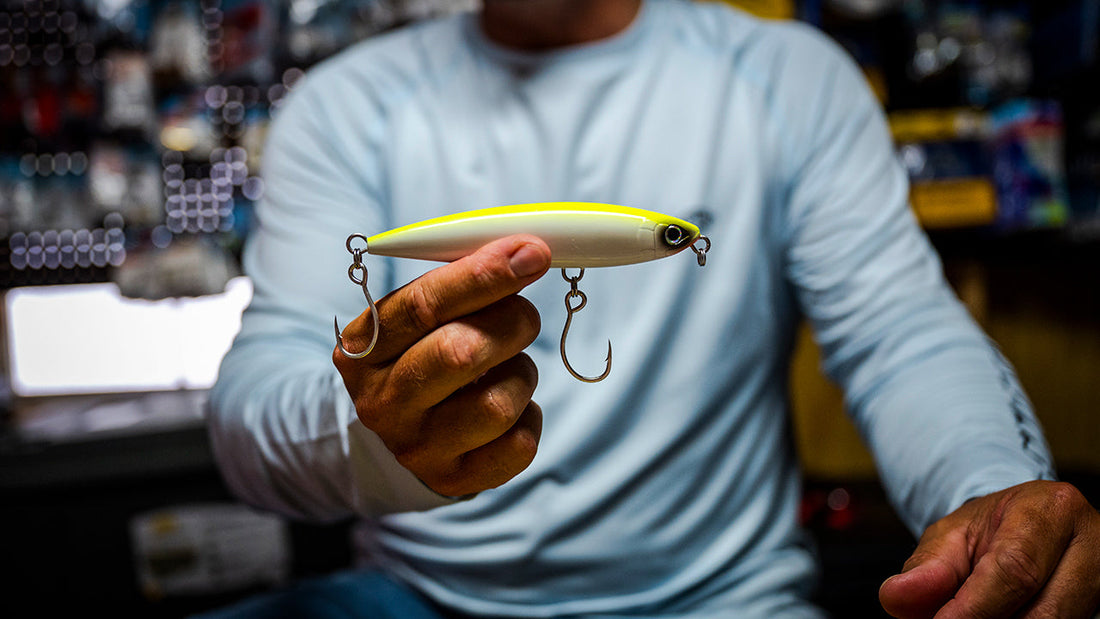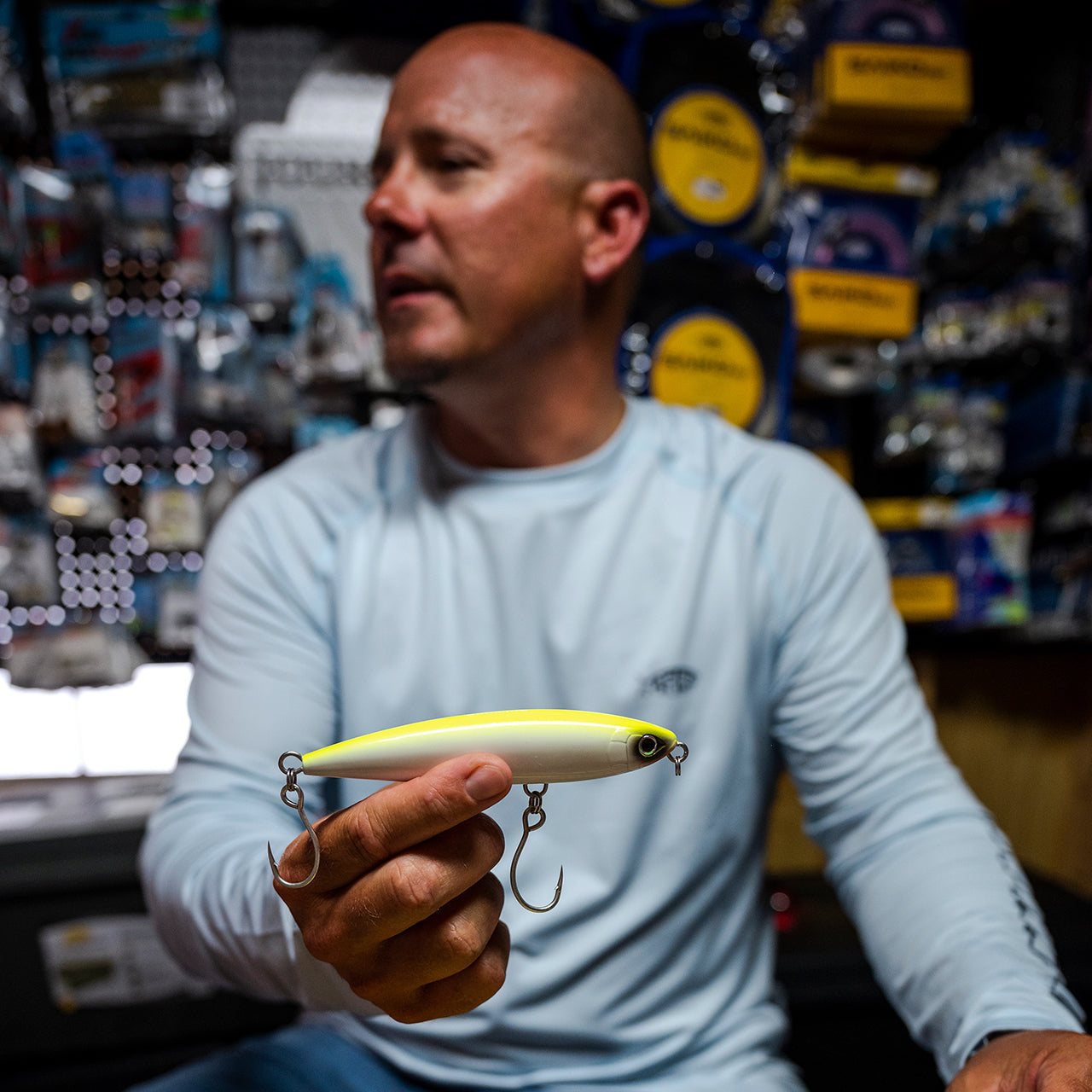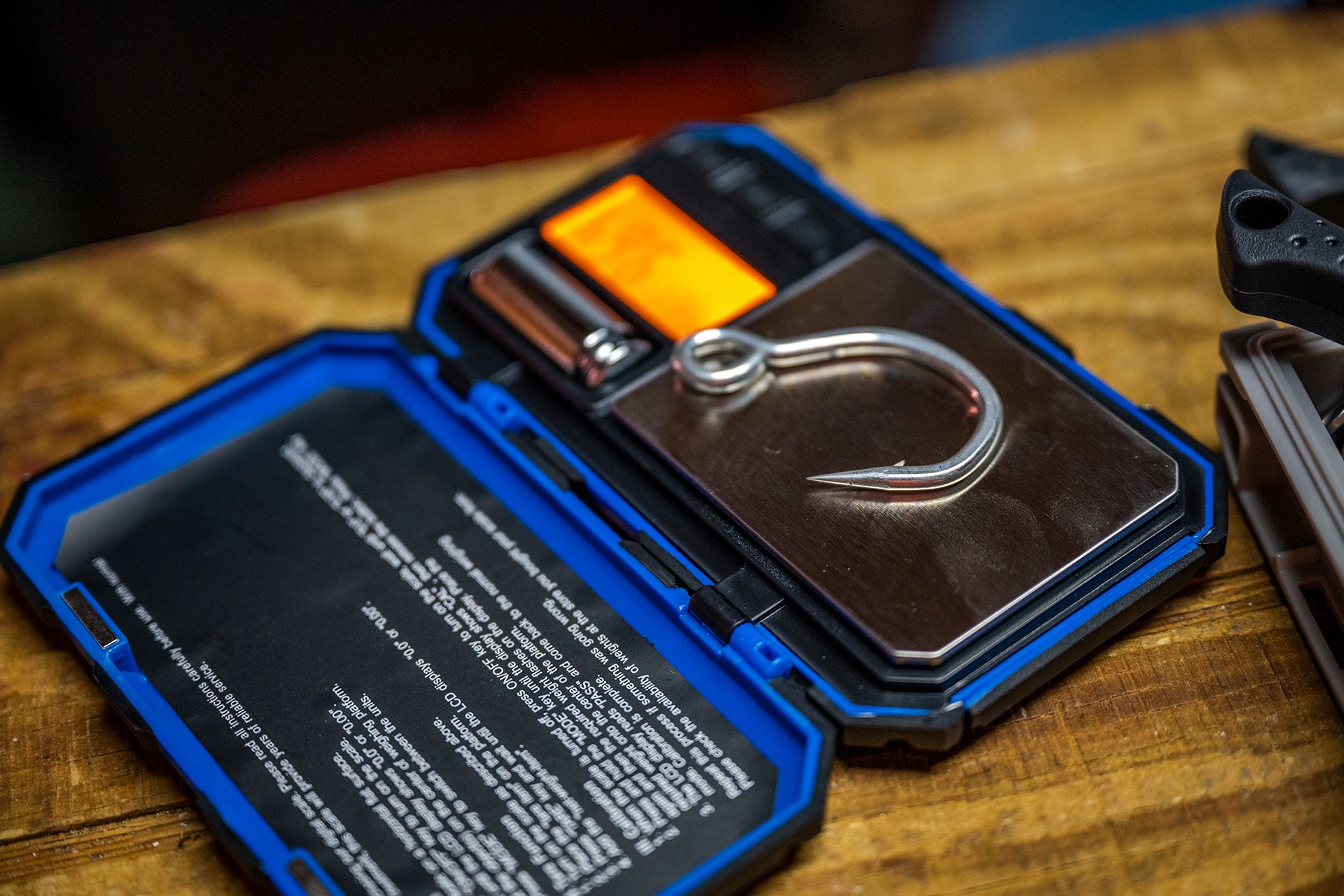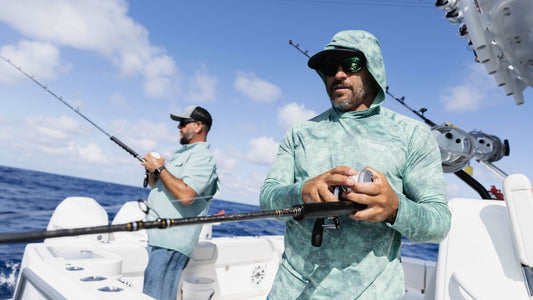
How and When to Do a Treble to Single Hook Conversion
Any angler who’s ever had to dig around with pliers down inside the mouth of a fish while trying to dislodge treble-hook points — while the lure’s second treble then lodges in the gill plates or belly — can relate to the wisdom of Capt. Eric Newman of Journey South Outfitters in Venice, Louisiana, when he says, “In any catch-and-release fishery, treble hooks can be hard on fish.”
When to Use Single Hooks
An effective alternative calls for removing treble hooks from hard baits and replacing them with inline singles. Newman cites two justifications for doing this.
First, and quite simply, “It’s really good for the fish.” Do the math: Six points (on two treble hooks, standard on most saltwater lures) vs. two points (on two singles) will inflict a lot less damage and allow you to get a fish back in the water quickly (or, if you’re harvesting a fish, will allow you to get it unhooked, ika-jimi’d and in the fish box, and get you back to the bite quicker). Journey South Outfitters places a real premium on conservation, so using single hooks makes sense. “We release a lot of bull reds [redfish]; those are our breeders and that’s our future,” he says.

“It’s safer for anglers.”
Without a doubt, treble hooks account for far more emergency-room visits than do singles. Note that Newman specifies inline single hooks. The standard single-hook configuration means that if an angler simply slides one onto a split ring after removing a treble, it will hang at 90 degrees to the lure. No bueno aesthetically and, more importantly, bad for the lure’s action and hookup success. Inline singles have the eye in the same plane as (in line with) the hook point, so they’ll hang perfectly in line with the lure, not at a right angle to it.
Many experts, like Newman, also contend that the ratio of fish landed to fish hooked is better with singles than trebles. “That’s because the gap on a single hook is so much bigger that with a treble hook, so once the hook is set, the odds of it being thrown are far less than with a treble. “When you pin a good fish on a single hook,” says Newman, “it’s in trouble!”

What You Need to Switch Treble Hooks to Single Hooks
The list of necessities to change out the hooks on various lures is pretty simple. The only tool really needed: split-ring pliers. These specially-designed pliers feature notched tips designed specifically to squeeze and hold open split rings. Newman suggests having on hand two pairs, one small for smaller lures/rings, and one larger for the big stuff.
Any angler serious about making regular hook swaps also needs to have on hand a wide assortment of split rings to ensure the optimal size. Newman notes that “It’s important to put new split rings on a bait when changing to inline singles” because the eyes on the single hooks are typically thicker/heavier than the eyes on the trebles they’re replacing, so a larger, more robust ring is needed.

The other part of the equation, of course, is hook. The angler should have a box with a range of inline hooks to meet any need for a specific size, from little #6 freshwater hooks to 7/0 for the biggest poppers and stickbaits. Note further that hooks may range from 1x to 4x. The heavier diameter can be critical with powerful fish such as tuna, giant trevally and amberjack or cubera snapper. However, Newman points out that these hooks add weight (more than the trebles they replaced) and may affect the performance of lighter lures and also requires much larger split rings. Thinner diameter may be enough for coastal/inshore fishing and the lighter weight shouldn’t impact lure performance.
As you slide the new (single) hook onto a split ring, be aware of which direction it will face. That is, hooks may face forward or backwards, depending upon how they’re put onto the ring. Make sure the rear hook is facing rearward (point facing back) and the front hook facing toward the front (point toward nose of the lure).







